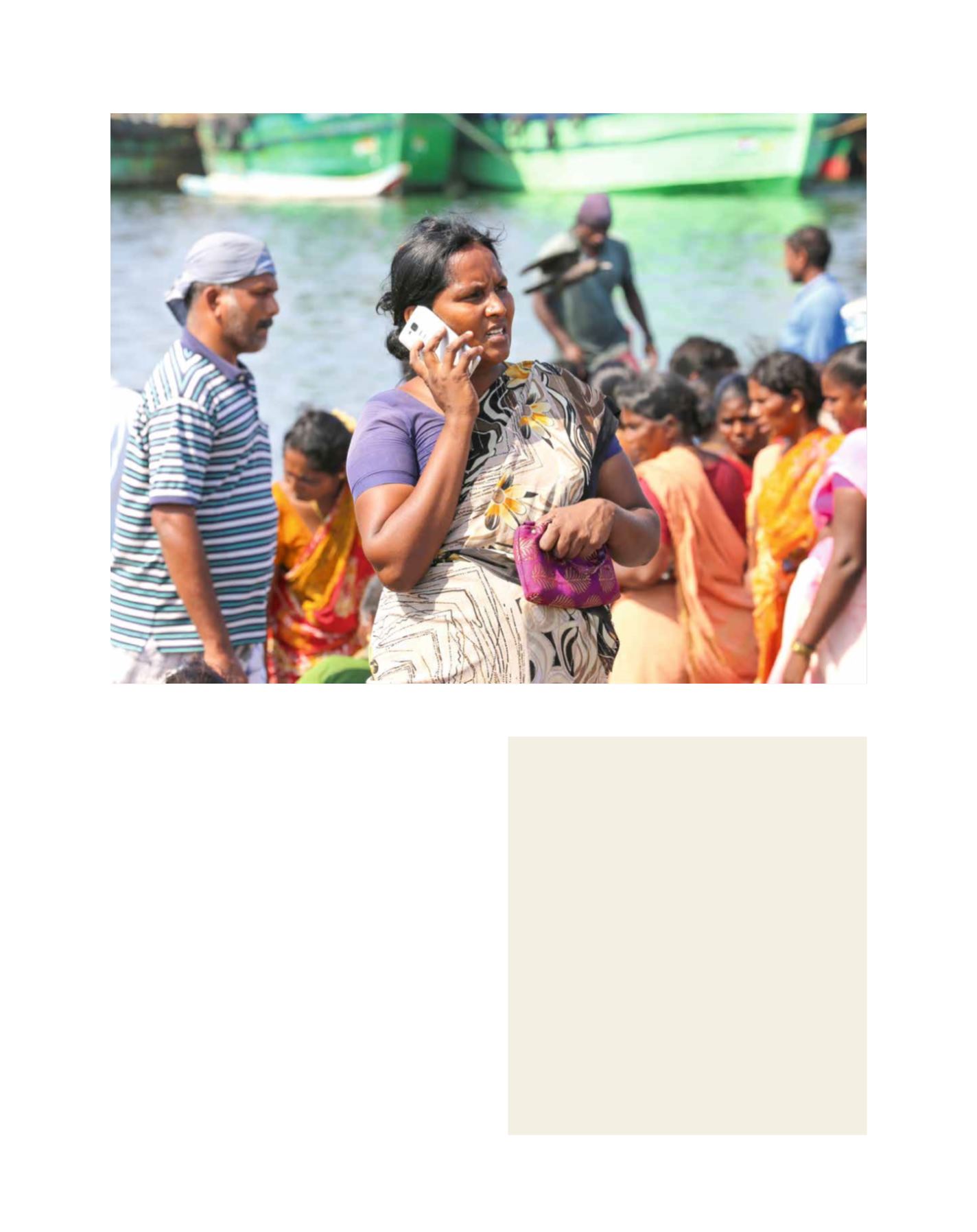

[
] 57
in the region working with governments and communities in
ushering technological and infrastructural development in the
fisheries sector. The programme also identified the changing
needs of women in the sector. A range of innovative interven-
tions geared at enhancing women’s capacity to engage in the
market were planned and implemented, including introduc-
tion of new activities like seaweed farming, fish marketing,
adult education and the formation of self-help groups (SHGs).
However, in the absence of good gender statistics, it has been
difficult to measure the trend and extent of women’s partici-
pation in the fisheries sector in the region. Approximately
4 million people in the region derive their livelihoods from
fishing and fishing-allied activities, of which about 10-15 per
cent are women. In India, marine fishers are a well-identified
sociocultural group. The total fisher population in the country
including adults and children is about 4 million (2010), of
which 1.92 million are women. In Sri Lanka, about 275,046
peoples are employed in marine fisheries sector, of which,
14,643 (7 per cent) are women (2015). Whereas in the inland
capture and culture fisheries, women constitute 5 per cent of
the workforce. In Bangladesh, of the total workforce in fisher-
ies (inland, marine and aquaculture), about 10 per cent are
women. In Maldives, women constitute about 11 per cent of
Image: S Jayaraj
Chennai Fishing Harbour, India: fisherwomen now negotiate prices through their cell phones
Securing women’s role in fisheries
The Voluntary Guidelines for Securing Sustainable Small-scale
Fisheries (VG-SSF) is an international effort in securing women’s
role in fisheries.
Rights and duties are the cornerstone of any successful governance
mechanism. The 1995 FAO Code of Conduct for Responsible Fisheries
(CCRF), which documented best practices in fisheries governance,
arguably focused on this. To further support implementation of the
CCRF, in June 2014, 143 FAO member countries adopted the VG-SSF.
As the title suggests, these guidelines focus on small-scale fisheries,
which constitute about 90 per cent of the global fishery.
The VG-SSF aims at ensuring human rights and dignity, gender
equality and equity, transparency and rule of law, participation,
accountability and social responsibility by empowering small-scale
fishing communities, including both men and women, to participate
in decision-making processes, and to assume responsibilities for
sustainable use of fishery resources. At the same time, the differences
between women and men have been acknowledged and the guidelines
suggest that specific measures should be taken to accelerate de
facto equality. The guidelines call for the state to secure equitable and
appropriate tenure rights to fishery resources (marine and inland) with
special attention paid to women. The guidelines also call for ending all
types of discrimination against women and ensuring secure workplaces
and fair wages while providing them with the necessary support to avail
different resources – such as finance and training.
G
ender
E
quality
and
W
omen
’
s
E
mpowerment
















